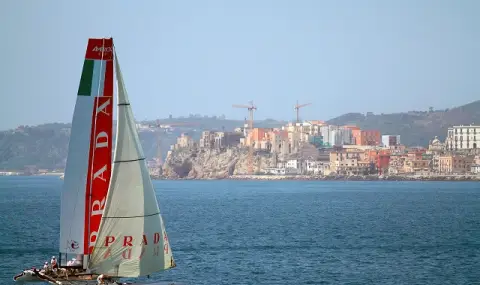It's coming from the Mecca of tourism, but traveling in the opposite direction - Cathy, a resident of Tenerife, is one of those ever-increasing tourists fleeing the heat wave for a cool holiday in Northern Europe, writes AFP, quoted by BTA.
Landed on the very "peak" on the continent, countries such as Norway and Sweden are now trying to attract visitors to their temperate latitudes for a "cool vacation".
Why leave the Canary Islands in the middle of the summer season? "Well, to escape the heat", replies the Spanish Cathy Padilla, "escaped" with three friends.
"And Norway has been in our focus for a long time because of its green landscapes, mountains, ice", adds a tourist met on the heights of the "troll road" (la Route des Trolls), an iconic route that winds its way up the mountain towards the fjords.
In 2023, the number of overnight stays by foreigners increased by 22 percent in Norway, which was a record in August, and by 11 percent in Sweden, according to official statistics. An increase caused by the end of health restrictions in 2022 and the depreciation of Scandinavian currencies.
According to a survey conducted in Germany for Sweden's official tourism and information website "Visit Sweden" (Visit Sweden), two out of five people plan to change their travel habits due to the heat in southern Europe. Most often by choosing other periods during the year, but also by choosing new destinations.
"Cooling is not just about the weather," explains Suzanne Andersson, CEO of the state-owned marketing company "Visit Sweden". "You travel to places where the weather is cooler, but which are also nice because they have fewer people.
Get off the crowded Mediterranean beaches and the furnace that partially closed the Acropolis in Athens in June and sparked wildfires elsewhere.
Many today prefer to take a dip in a lake or fjord or fill their lungs with fresh air during a mountain excursion in a sense of relative isolation.
Having just disembarked from a liner anchored at the bottom of the majestic Geiranger Fjord, a UNESCO World Heritage Site, Pam, an English tourist from Lichfield, admits she packed a raincoat and woolen clothes in her suitcase as she advised to do.
"Yesterday I didn't think I'd be standing there in sandals, a t-shirt and even shorts. It's wonderful,' she said in the bright sunlight. "But it's not so hot that we can't walk.
"I'm not interested in just sitting on a deck chair, reading a book, getting up just to eat something and come back. "I prefer to visit places, discover their history, just admire beautiful places," explains Pam.
According to UN climate experts (Intergovernmental Panel on Climate Change - IPCC), it is "almost certain" that the frequency and intensity of extreme heat and the duration of heat waves have increased since 1950 and will continue to do so. do with global warming.
By 2050 in Europe, around half of the population could be exposed to a high or very high risk of heat stress in summer, and the number of deaths related to heat stress could double or even triple with global warming at rise in temperatures between 1.5-3 degrees Celsius.
"Spain and Greece – no,' says a 74-year-old French pensioner as he exits the bus in the village of Geiranger.
When asked why he chose Norway in particular, he answers: "Because the climate is much nicer and there are destinations I won't go to, or at least not in the spring-summer season, as it is very hot there.
/p>
The capital of the Finnish province of Lapland, Rovaniemi, located beyond the Arctic Circle, also registered a 29 percent jump in overnight stays last year.
"This trend started years ago, but has intensified with the painfully hot summers in southern and central Europe,", confirmed Sanna Karkainen, from the Institute of Health and Welfare in Helsinki (THL), responsible for promoting tourism in the area.
"What worries us the most, of course, is that there are too many people at the same time," emphasizes Jan Uwe Trygestad, a longtime former mayor of the Norwegian village of Hellesylt, Stranda municipality, where an impressive tourist liner capable of carrying 6,000 passengers and 2,000 crew members.
"This little village. Hellesylt has between 280 and 300 inhabitants in winter. Apparently it creates a bit of a culture shock when a small town suddenly appears, by European standards. (...) But we are adapting", the Norwegian points out.
